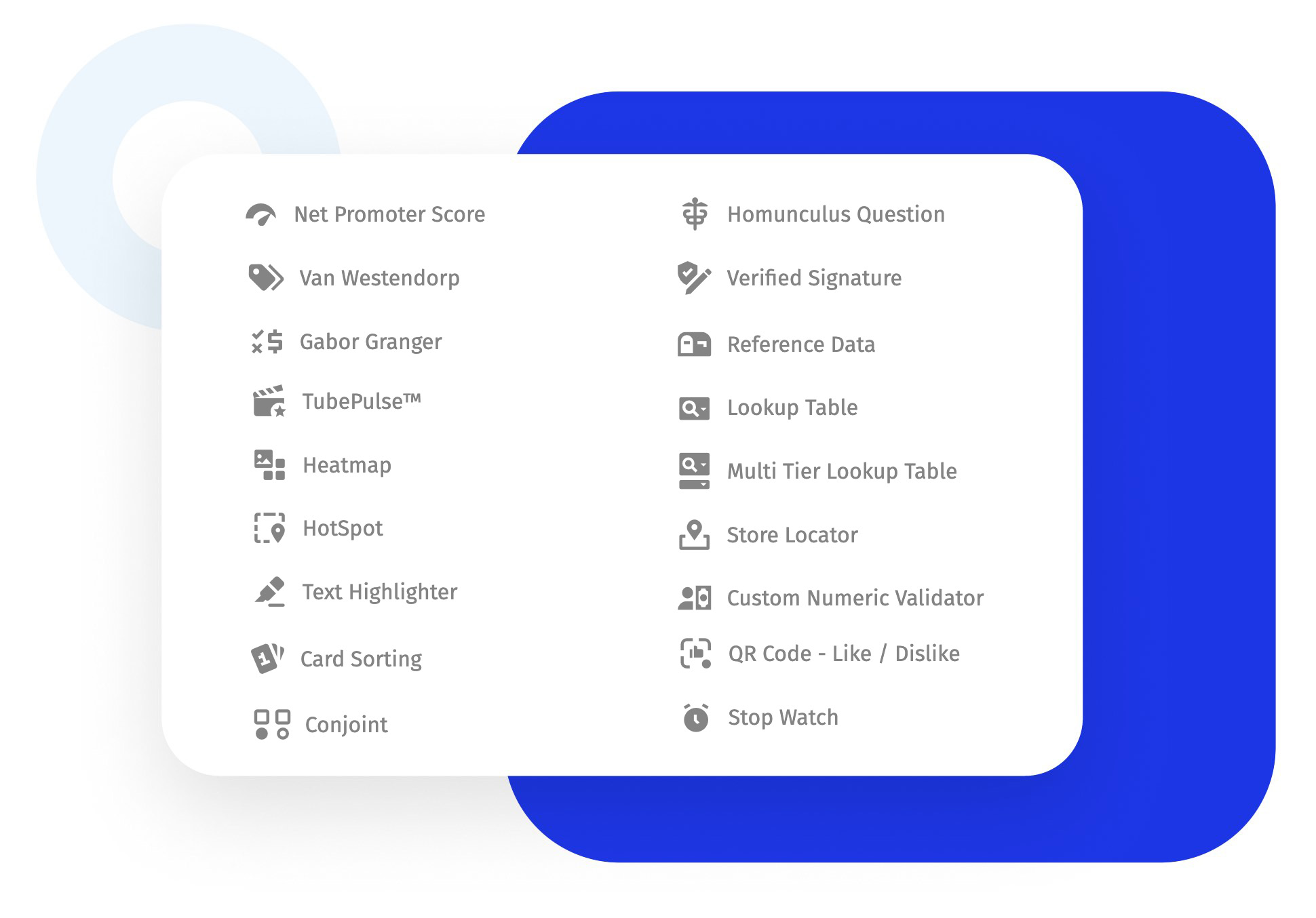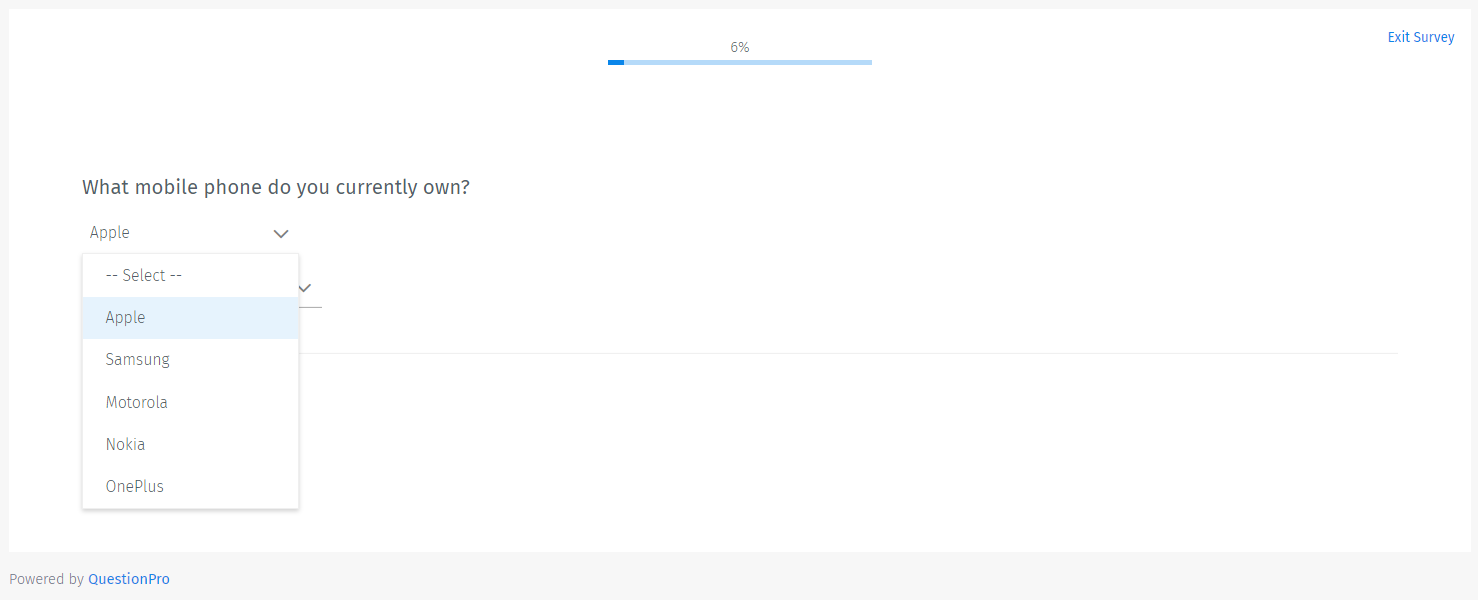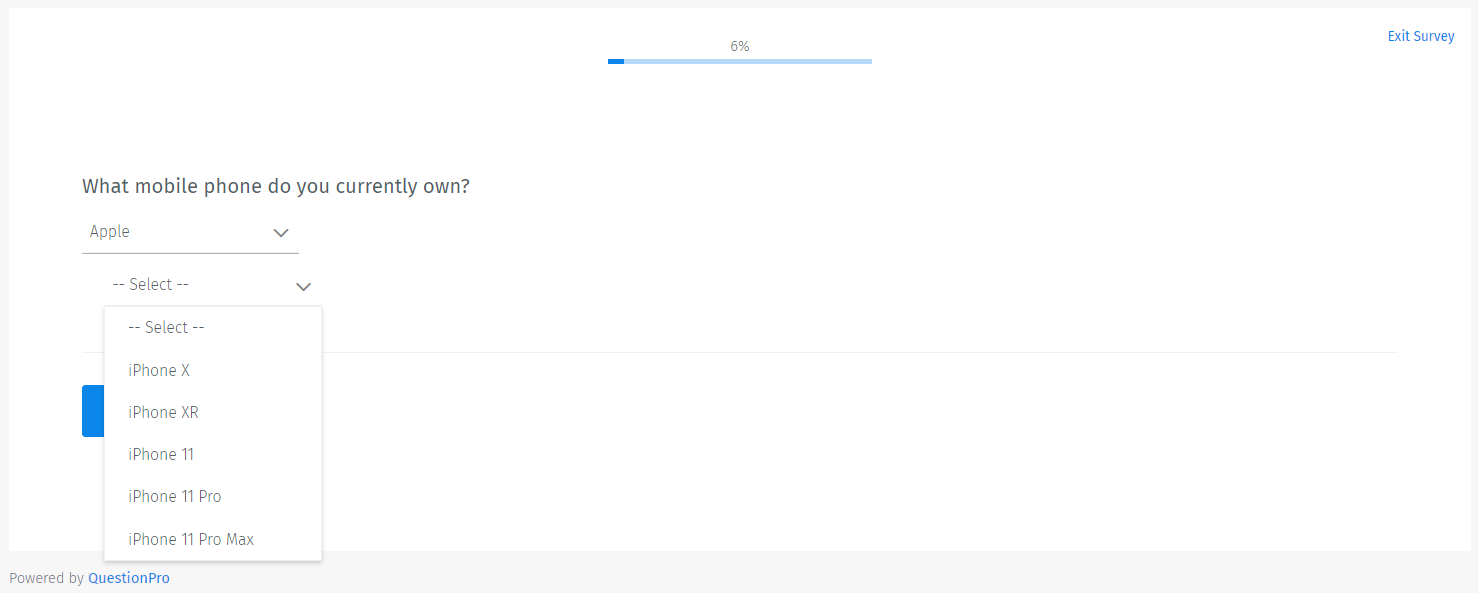For example, users could choose the state and then see a list of all universities in that state from which to select the university.
The dynamic multi-tier lookup table is very useful to researchers as it helps them collect accurate, drilled-down data. Depending on the choice made in the hierarchy above, the researcher can display the next answer option. It also enables researchers to create cleaner, more likable surveys, especially when the list of answer options is too long.
It has a positive impact on respondents too as they do not have to sift through long lists of data. Once they select the first answer (on level one of the hierarchy), only the answer options that are related to the first level are displayed on the second. This intelligent type helps to keep away survey fatigue among respondents.
Uses of dynamic multi-tier lookup tables
Researchers can use the dynamic multi-tier lookup table when there is a need to collect segmented data based on the choice of the answer in the above hierarchy. If there is a question that has a long list of answer options, this question type can be used to create a hierarchy and then segment data to help respondents choose their answer correctly.
Example of a dynamic multi-tier lookup table
Let’s take the example of a cellphone company, collecting data from the general population about which cellphone model and make they are currently using. There are hundreds of mobile phone models available and used and listing them all down in a single list is not practical. Instead, the researcher can create a hierarchy where the respondents first have to choose the make of the cellphone and based on the selection, the model numbers are displayed of the selected brand. This helps the respondents to easily choose the model and make of the cellphone they are currently using.
Let’s look at the example below:
Step one: The respondent first chooses his/her cellphone brand.

Step two: Depending on the brand selected, only models of that brand will be displayed.

Advantages of using dynamic multi-tier lookup tables
Here are the advantages of using a dynamic multi-tier lookup table:
Quality: Multi-tier lookup tables maintain the quality of answers captured. Instead of asking the respondents to type out their answers, this question type suggests answers to choose from.
Accuracy: Accurate data can be captured and typos can be eliminated. The question leaves no room for errors.
Speed: The multi-tier lookup table helps the survey taker by segmenting the data so that an answer choice can be made easily and fast.
How to set up a multi-tier lookup table?
Check out our help file on the dynamic multi-tier lookup table survey question to learn how to set up and use this survey feature.
Survey Software Easy to use and accessible for everyone. Design, send and analyze online surveys.
Research Suite A suite of enterprise-grade research tools for market research professionals.
Customer Experience Experiences change the world. Deliver the best with our CX management software.
Employee Experience Create the best employee experience and act on real-time data from end to end.







